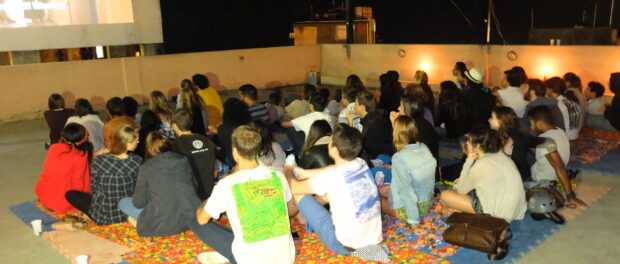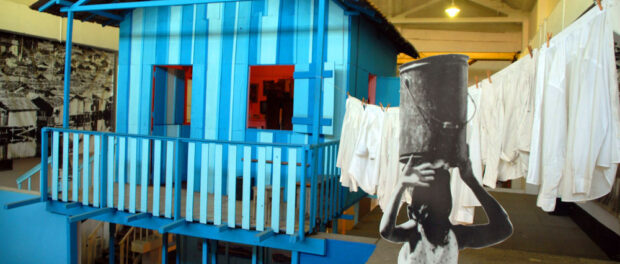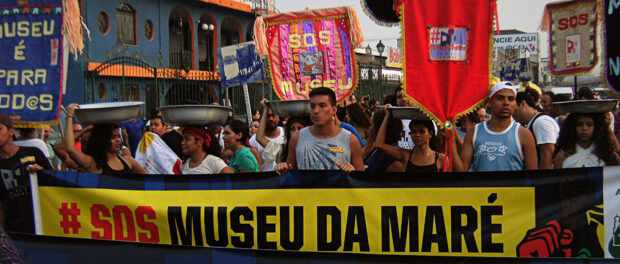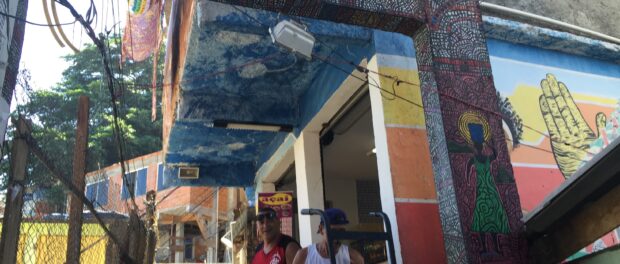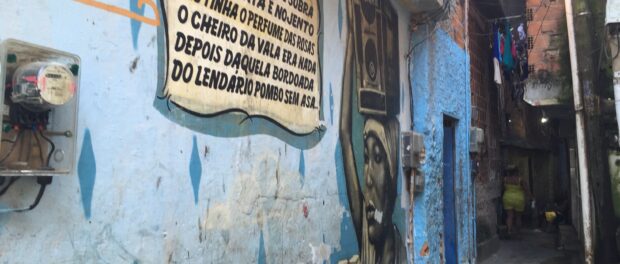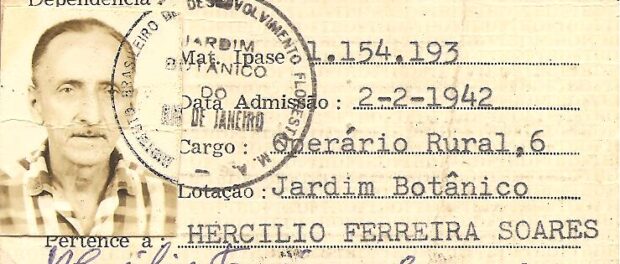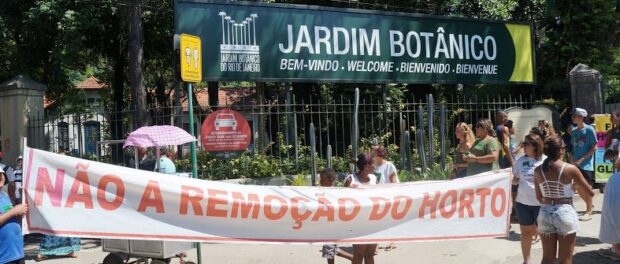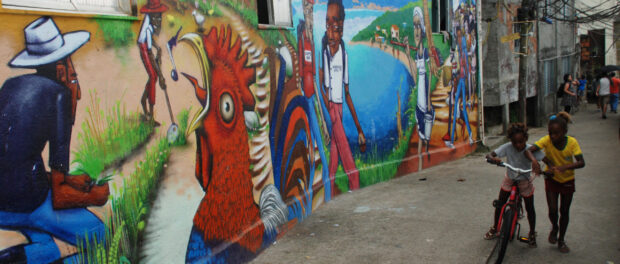
Rio de Janeiro’s community museums are often overlooked, undervalued and underfunded, but now several are also under threat of eviction.
“In these museums the point of interest isn’t simply the preservation of objects, the focus is on human relationships. They are museums that consider human life as their greatest heritage,” explains Mario Chagas, museologist and key worker in the establishment of community museums.
These museums are often hugely important to their communities. Created by residents and local collaborators, often without much support from the state, the museums based in favelas are some of the most innovative and imaginative because they have to think up original solutions to the inherent challenges that arise, instead of relying on large investments.
They provide vital multipurpose public spaces which, for example, can host classes for children, public events, and many other beneficial activities.
Community museums also play a role in raising the self esteem of a community. Emerson de Souza, museologist, Horto resident and coordinator of the Museu do Horto says, “It’s like I always say to people here. If we don’t give value to our own history, then no one else will either… We have to work on this, for a person’s own self esteem it’s important that they see themselves, that they recognize themselves within the history of humanity.”
Museu da Maré
The Museu da Maré was one of the first community museums of its kind in Rio. Based in Complexo da Maré in Rio’s North Zone, it was opened in May 2006 and now, coming up on its 10th anniversary, is facing the threat of eviction.
Run by the NGO CEASM (Maré Center of Solidarity Studies and Actions) the Museu da Maré is based in an abandoned factory that community members renovated and transformed into an award-winning space. The museum team negotiated with the company that owns the building in order to gain permission to occupy it, and expected their contract would be extended.
However despite the museum’s international acclaim and local significance, the company has demanded the return of the building and the eviction of the museum without providing an explanation as to why, or offering an alternative.
The eviction threats go back to 2014. Museum organizers and supporters have protested and plan to fight for the museum to remain. The current date of eviction is set for May 1, International Workers Day, rather ironic given the museum’s role celebrating the working lives and struggles of favela residents. It is also only one week before the museum’s 10th anniversary on May 8.
Museu da Maré has earned international recognition and its organizers have presented their ideas and museum model in the UK, the Netherlands, South Africa, and Mexico, among other countries. In 2006 the museum was awarded the Order of Cultural Merit by the Brazilian government.
More importantly, the museum is a huge success within the community. A library, long and short term exhibition spaces, a computer lab and administration spaces are among the services it offers to residents of Maré. “The visitor and testimonials books are clear indicators of the impact generated by the museum in community life. There are music, dance, theater, handicraft, capoeira and storytelling projects and performances. These, plus workshops and seminars, are all part of the day-to-day operation of the museum,” says Chagas.
He calls the eviction threat “a total lack of sensibility, a lack of attention to the community, without a thought to the social benefits the museum generates in the community.”
Museu de Favela
Museu da Favela (MUF), a leading community museum in the South Zone favelas of Cantagalo and Pavão-Pavãozinho is also facing the threat of eviction.
Described as a “living territorial museum,” all 12 hectares of these favelas are considered part of MUF. As well as an open air gallery of muraled houses, the headquarters and operations base provides the museum with a vital physical space.
The headquarters hosts exhibitions, a library, gift shop, and the administrative center of the museum. It’s also used to hold children’s ballet and capoeira classes and has a large terrace where community parties take place and films are screened.
The museum team created this base with the help of public funds from the Rio de Janeiro Culture Secretariat and federal Ministry of Culture. They entered into an agreement with the local Catholic church to reform and use their abandoned upper floor that had been left in disrepair. MUF renovated the second floor and built the terrace and viewpoint.
Recently the situation has changed following the departure of the priest with whom MUF had the agreement and enjoyed a good relationship. His replacement has demanded the return of the second floor of the building and served MUF an eviction notice. The notice threatened the museum with eviction later this month, on April 26.
Created by favela residents and community leaders, MUF has played a central role in the community ever since its launch in February 2007. A trail of 27 houses, each painted with colorful graffiti leading visitors through the favelas, documents different aspects of the communities’ history from the first settlers on the hill to the struggles of present-day residents.
The museum has been a great success. Along with the important function that MUF plays as a community hub, it also plays a role in promoting recognition of favela residents’ lives and culture. A previous exhibition by MUF, ‘Women Warriors,’ celebrated the lives of local women and held a crowdfunding campaign to tour the exhibition in Brazil.
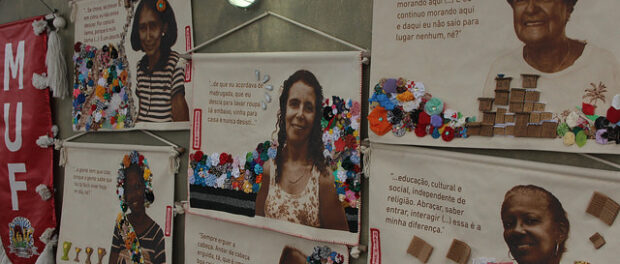
Museum organizers are optimistic that they can fight the decision and remain in the building. They recently met with a church official to discuss the eviction and argue their case.
Museu do Horto
The Museu do Horto is also a territorial museum which considers the whole community as its site of recognition and preservation, similar to MUF, and which documents the community’s origins going back hundreds of years. Created in 2010 by residents, the museum currently does not have a physical space, as the social club where it was based was removed in 2014. Instead it exists online and on Facebook, where its collection of historical documents can be viewed.
Museu do Horto’s coordinator and lifelong community resident Emerson de Souza describes the difficulties of operating without a physical base: “It’s complicated because [the museum] doesn’t have the acknowledgment it deserves in the community. People see a museum as somewhere you can visit, and find archives and history, but our museum doesn’t work that way anymore… We have a virtual museum, it’s this I work on, and also the raising of value of the local history and memories in the community.”
Beyond the lost headquarters, the museum is now under threat because the territory itself is under threat: a large area of the community has been marked for eviction in order to increase the area available for the Botanical Garden Institute’s research area. 520 of 619 families have been told their houses will be removed, almost 85% of the community.
Residents and community supporters are protesting to highlight their residents’ struggle against removal, amid fears that eviction notices and misinformation are being used to increase psychological pressure on residents.
The museum has played an important role in the struggle against eviction. Emerson de Souza says, “It has helped to give legitimacy [to the community] and proved what many people were saying was wrong: that the residents are invaders of the park. Through our research we have managed to show the limit of the Botanical Gardens and beyond that limit, that the residents have been living here since 1887.”
The museum hopes to win the struggle against eviction and once again establish a physical space for its work.

